 |
James L. Holly, M.D. |
|
 |
|
|
|
|
|
|
|
|
| James L. Holly,M.D. |
| November 11, 2008 |
| Your Life Your Health - The Examiner |
|
For many years, Mrs. Holly has said, "Before I die, I want to visit The American Cemetery at Normandy." During our recent trip to London, we flew to Normandy and visited Omaha Beach and the American Cemetery. It is impossible to describe the experience completely. Because we were both born during World War II, we were both less than one year old on D-Day, and because the study of World War II has been a significant part of our lives, we were deeply moved by the evidence of the sacrifices made by the men and women who died to preserve our freedom from the tyranny of Nazism. On this Veterans' Day, our "pilgrimage" to Normandy and our gratitude to the veterans of our military become one.
History of Veterans Day
November 11th is the day on which the Armistice was signed ending World War I, in 1918. The war officially ended on the 11th hour of the 11th day of the 11th month in 1918. U.S. President Woodrow Wilson first proclaimed an Armistice Day for November 12, 1919. The United States Congress passed a concurrent resolution seven years later on June 4, 1926, requesting the President issue another proclamation to observe November 11 with appropriate ceremonies. On May 13, 1938, a Congressional act made the 11th of November in each year a legal holiday; "a day to be dedicated to the cause of world peace and to be thereafter celebrated and known as 'Armistice Day'."
In 1953, an Emporia, Kansas, shoe store owner named Al King had the idea to expand Armistice Day to celebrate all veterans, not just those who served in World War I. King had been actively involved with the American War Dads during World War II. He began a campaign to turn Armistice Day into "All" Veterans Day. The Emporia Chamber of Commerce took up the cause after determining that 90% of Emporia merchants as well as the Board of Education supported closing their doors on November 11, 1953, to honor veterans. With the help of then-U.S. Rep. Ed Rees, also from Emporia, a bill for the holiday was pushed through Congress. President Dwight Eisenhower signed it into law on May 26, 1954. Congress amended this act on November 8, 1954, replacing "Armistice" with Veterans, and it has been known as Veterans Day since.
President Truman's words, immoratlized at The American Cemetery at Normandy, summarizes all of our thoughts about this day.
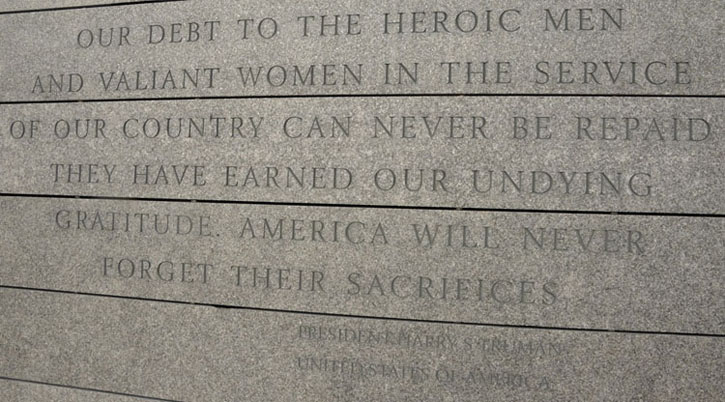
The American Battle Monument Commission
Few memorials honor our military veterans as effectively as do the cemeteries around the world which continually pay silent homage to those who have made the ultimate sacrifice for their country. The Commission administers, operates, and maintains 24 permanent American burial grounds on foreign soil. Presently there are 124,909 U.S. war dead interred at these cemeteries, 30,921 of World War I, 93,238 of World War II and 750 of the Mexican War. The Commission also administers, operates and maintains 25 memorials, monuments or markers.
Good men have differed on the causes of war and sometimes have even argued whether the United States should have fought a war, but none can disagree with Dr. Mark W. Clark's statement memorialized at The American Cemetery.
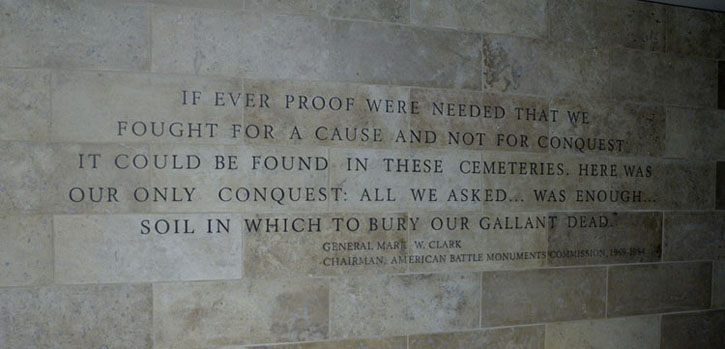
The United States has never fought a foreign war for conquest or for the establishment of an empire. I am confident that we never will.
The American Cemetery at Normandy
Perhaps the most famous United States cemetery on foreign soil is the American Cemetery at Normandy. This aerial photograph was taken the day Mrs. Holly and I flew across the English Channel to visit the cemetery.
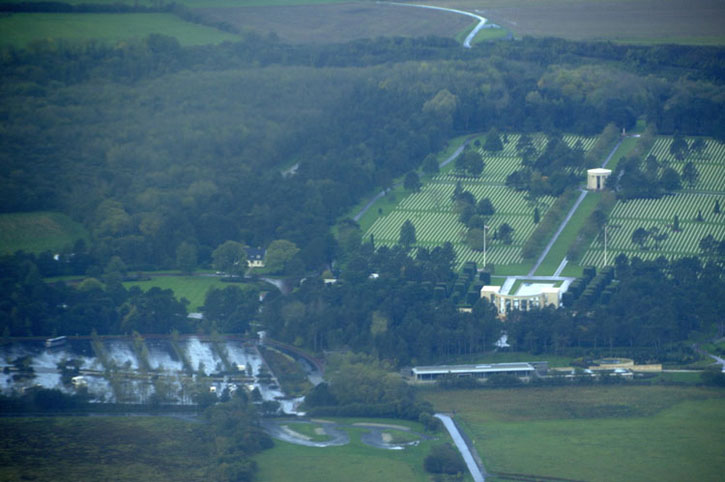
History of the American Cemetery
On June 8, 1944, the U.S. First Army established the temporary Saint-Laurent-sur-Mer cemetery, the first American cemetery on European soil in World War II. After the war, the present-day cemetery was established a short distance to the south of the original site. Like all other overseas American cemeteries in France for WW I and II, France has granted the United States a special, perpetual concession to the land occupied by the cemetery, free of any charge or any tax. This cemetery is managed by the American government, under Congressional acts that provide yearly financial support for maintaining them, with most military and civil personnel employed abroad. The U.S. flag flies over these granted soils.[1]
The cemetery is located on a cliff overlooking Omaha Beach (one of the landing beaches of the Normandy Invasion) and the English Channel. It covers 172 acres, and contains the remains of 9,387 American military dead, most of whom were killed during the invasion of Normandy and ensuing military operations in World War II. The graves face westward, towards the United States.
Known Only to God
307 of the graves contain the remains of unidentified soldiers. This is a haunting picture which will forever be etched in my mind. To men, fame and accomplishments are the most sought after epitaphs. To Mrs. Holly and me, the most fitting benediction upon one's life would be this one, "known but to God." After returning from London, I asked a retired military office, who served in the Army's Delta Force, what his response to this marker was. Simply he said, " What more could be said of anyone's life."
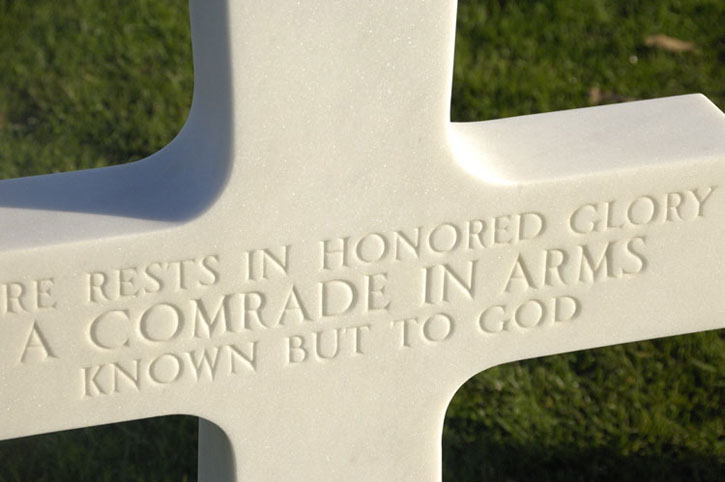
This simple marker was the most arresting momument in this glorious place. Mrs. Holly and I spent a quiet moment reflecting on our gratitude for what this man did, whose identify is unknown to us. What he did was done when we were both less than one year old We expressed our gratitude for having the privilege to visit this sacred place and that gratitude is the substance of our Veterants Day remembrances.
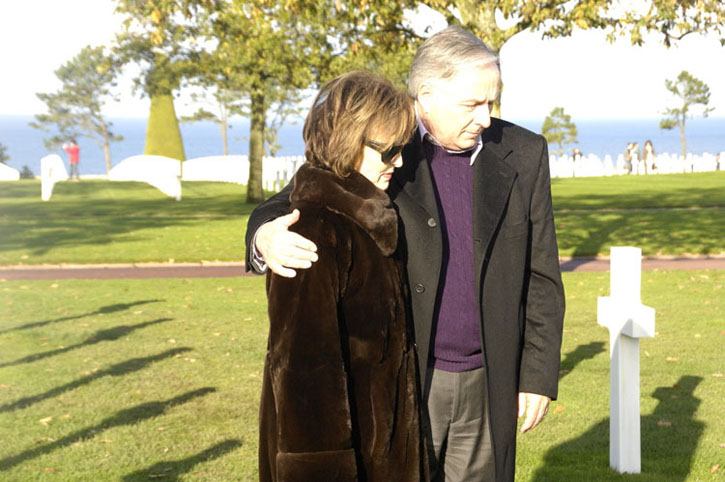
The names of 1,557 Americans who lost their lives in the conflict but could not be located and/or identified are inscribed on the walls of a semicircular garden at the east side of the memorial.
Facing west at the memorial, one sees in the foreground the reflecting pool, the mall with burial areas to either side and the circular chapel beyond.
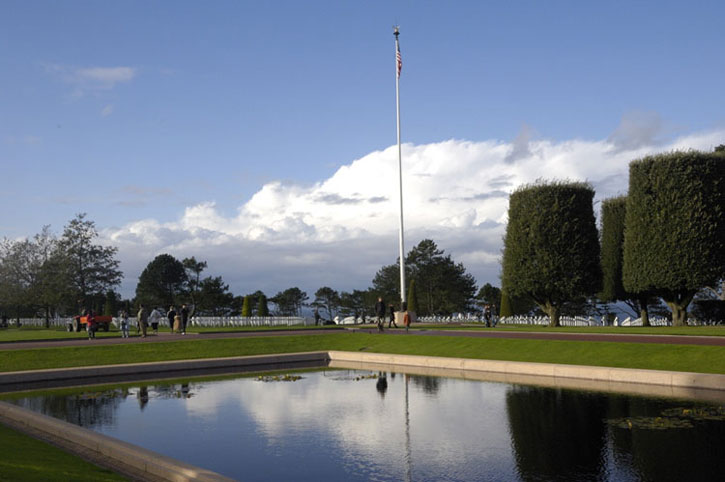
The rows and rows of grave markers, emmaculately kept, are a haunting memorial for those who landed and died on the five beaches on D-Day, June 6, 1944.
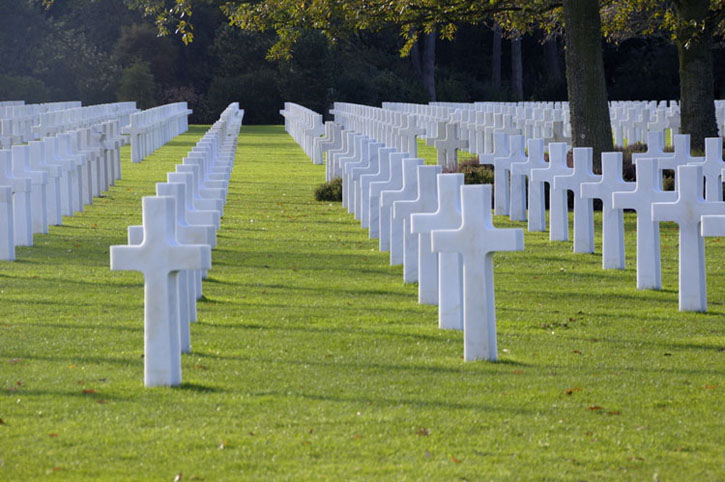
No matter what view you take, the effect is the same: sobriety, silence...
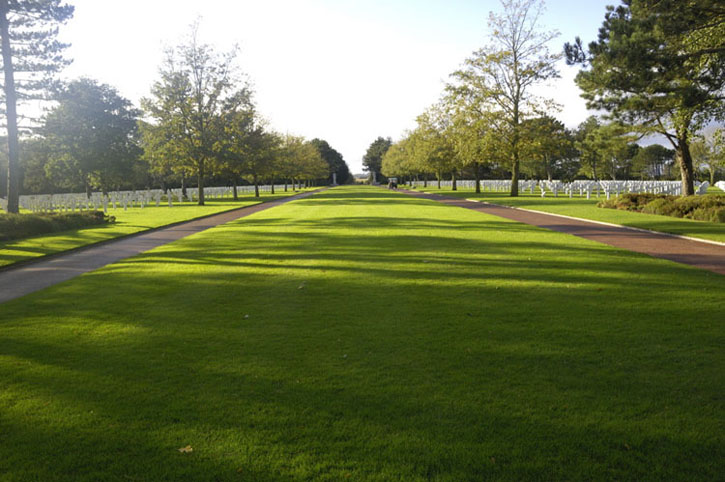
Overlooking Omaha Beach where many of these men and women died, the insanity is replaced with the serene. Below, the dynamic character of this memorial is seen as one notices that the grass is partially cut and the leaves are partially removed. As we paid our visit, others continued their endless task of making sure that our graves never disappear. This was the promise of General George Patton, who, standing over the graves of our soldiers in North Africa said, "Our graves aren't gonna disappear like everybody else's who fought here. The Greeks, Romans, Carthaginians. God, how I hate the 20th century."
He hated it because the nobility of service and the honor owed to those who served had often been lost. This cemetery and this day insure that those who sacrificed will not be forgotten and they assure us that we can and will remember.

As we exit the grounds of the cemetery, our hearts and our eyes continue to be drawn back to this place.
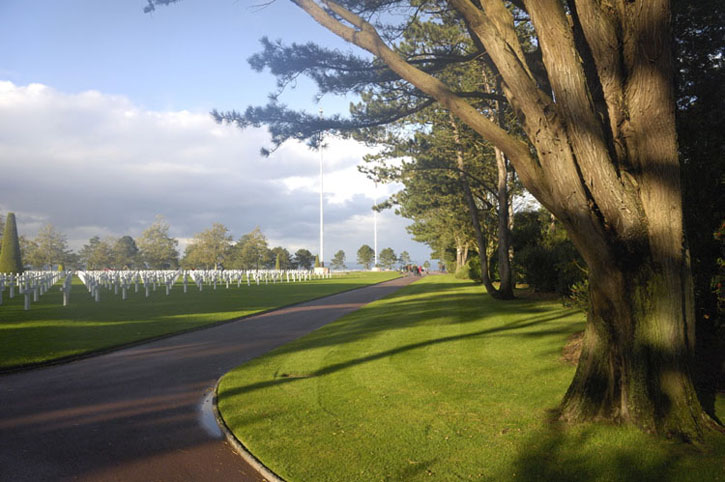
We must never and we shall never forget. As we all, whether less than one year of age or drawing near to our last journey to a cemetery somewhere, continue our pilgrimage, we must ask those who know us best, "Tell me that I have been a good person; tell me that I have lived a good life." The debt we owe to these nine thousand and to millions more like them, demands that we be a good person and that we lead a good life. On this Veterans Day we say, "thank you; thank you; thank you, thank you and may God always and forever bless you."
|
|
|
|
|
|
|
|
|
|
|